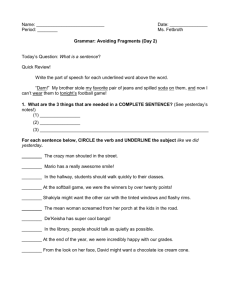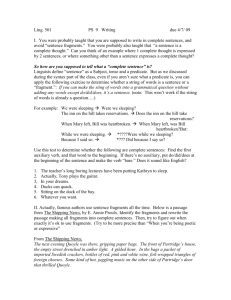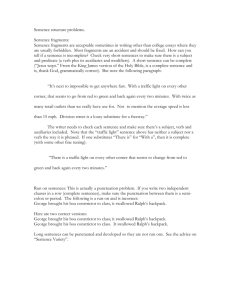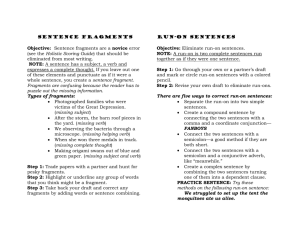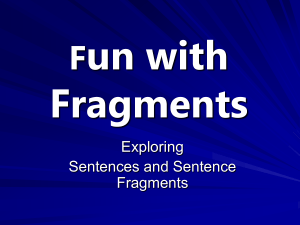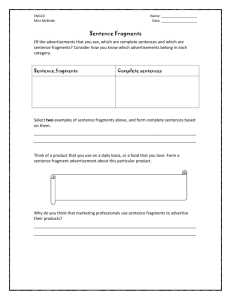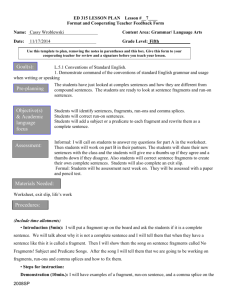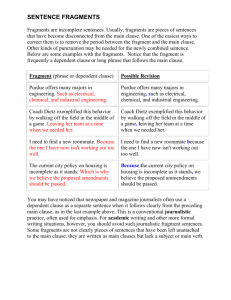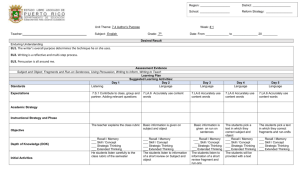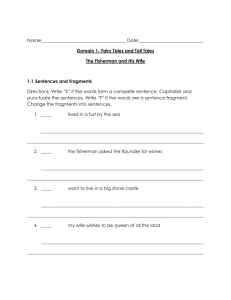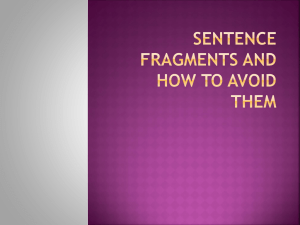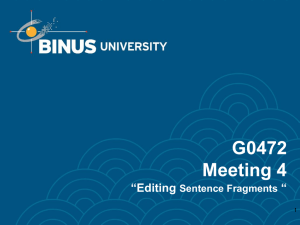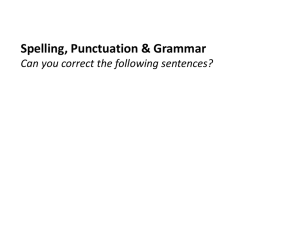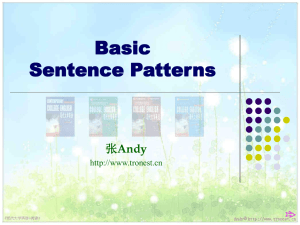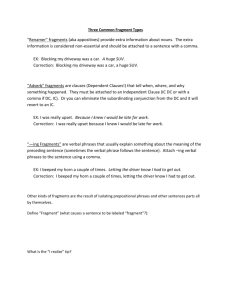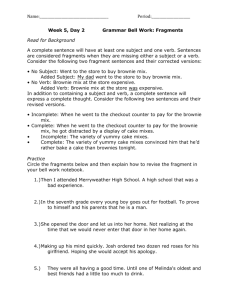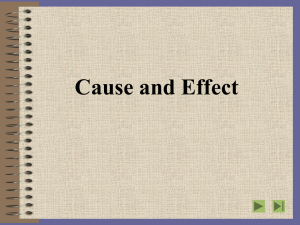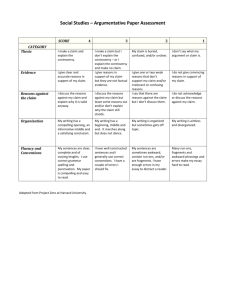the Sentence
advertisement
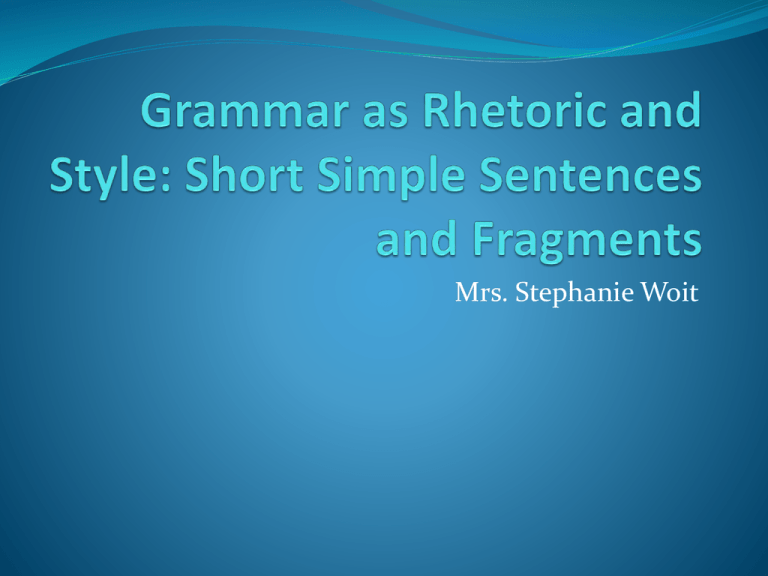
Mrs. Stephanie Woit Short Simple Sentences A simple sentence, strictly defined has a subject and a verb: it consists of one independent clause. A simple sentence may have a compound subject, a compound verb, a modifier, and an object or a complement, but it still is one independent clause. Examples: There is a problem, though. But the chances are miniscule. This must be Phillip’s theory, anyway. The emails and phone messages addressed to my former self come from a distant race of people with exotic concerns and far too much time on their hands. Sentence Fragments A sentence fragment is an incomplete sentence that readers understand to be complete. Some fragments are missing a subject, verb, or both; other fragments have a subject and verb, but are dependent clauses. Consider the following examples: Wouldn’t it be better for the kids if the mother stayed at home? No offense, but no. Hurry, I urge my country. Before it is too late. Rhetorical and Stylistic Strategy A series of simple sentences can become monotonous, but 1 or 2 short simple sentences can be rhetorically effective in a number of situations: After several long sentences As a summary of what the writer has just said As a transition between sentences or paragraphs Essentially, one or two short simple sentences create emphasis by contrast. As a writer, when you juxtapose 1 or 2 short simple sentences with several longer ones, you call attention to the short simple ones. Rhetorical and Stylistic Strategy Sometimes writers use sentence fragments, especially short ones. Occasionally you may use them for effect. What is important is that you use them for a special reason: To make a transition To signal a conclusion To emphasize an important point Sentence fragments slows readers down and emphasize importance of time. A WORD OF CAUTION….use both simple sentences and fragments SPARINGLY! Overused, they lose their punch and become a gimmick. You NEVER want your audience to think that you made a grammatical error.

